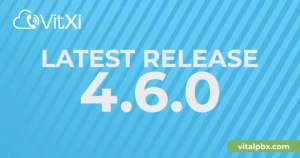The Importance of Call Analytics in Your Business: A 2025 Guide to Unlocking Growth
Your business phone system is more than just a tool for making and receiving calls; it’s a goldmine of untapped data. Every conversation with a customer or prospect contains valuable insights into their needs, pain points, and satisfaction levels. The question is, are you listening? This is where understanding the importance of call analytics in your business becomes a game-changer. Without it, you’re making critical decisions based on guesswork instead of data.
In 2025, companies that leverage call analytics are not just improving customer service—they are revolutionizing their sales processes, streamlining operations, and gaining a significant competitive edge. This comprehensive guide will explore how call analytics software transforms raw call data into actionable intelligence that can fuel your company’s growth and success.
What is Call Analytics and Why Does It Matter Now?
For years, businesses relied on basic call logs that showed call duration and timestamps. While useful, this is like trying to understand a book by only reading the chapter titles. Modern call analytics, often integrated into advanced PBX systems, goes much deeper, using technologies like AI and speech recognition to analyze the content and context of conversations.
Beyond Simple Call Logs: Defining Modern Call Analytics
Call analytics is the process of gathering, analyzing, and reporting on data from phone conversations to extract meaningful business insights. It’s not just about how many calls you get, but about what happens during those calls. This technology can automatically transcribe conversations, identify keywords, detect customer sentiment, and track outcomes.
This shift from simple tracking to deep analysis provides a 360-degree view of your voice communications, allowing you to understand the “why” behind the “what.”
Key Metrics That Drive Business Decisions
To truly grasp the power of call analytics, you need to know what to measure. These are not just vanity metrics; they are key performance indicators (KPIs) that directly impact your bottom line.
- Call Volume and Peak Times: Identify when your customers are calling most, allowing you to optimize staffing schedules and avoid missed calls.
- First Call Resolution (FCR): A high FCR rate means you are solving customer issues on the first try, a major driver of customer satisfaction.
- Average Handle Time (AHT): Understand how long it takes agents to resolve an issue. While a lower AHT is often good, it must be balanced with FCR to ensure quality.
- Call Abandonment Rate: Pinpoint how many callers hang up before speaking to an agent. A high rate can indicate issues with your IVR system or staffing levels.
- Customer Sentiment Analysis: AI-powered tools can analyze the tone and language of a call to gauge whether a customer is happy, frustrated, or neutral.
- Keyword Spotting: Automatically flag calls where specific words or phrases are mentioned, such as “cancel,” “competitor name,” or “poor service.”
Transforming Customer Experience with Data-Driven Insights
Excellent customer experience (CX) is a primary differentiator in today’s crowded market. Call analytics provides the raw data you need to move from a reactive support model to a proactive, customer-centric one.
Understanding the Customer Journey Like Never Before
By analyzing call transcripts, you can identify recurring issues and common questions your customers face. Imagine your company sells software, and analytics reveals that 20% of support calls are about a specific installation step. Instead of just answering the same question repeatedly, you can create a tutorial video or a detailed knowledge base article to address it, freeing up your agents for more complex issues.
This proactive approach not only improves the customer journey but also demonstrates that you are listening to their feedback.
Personalizing Interactions and Improving Agent Performance
Call analytics is an invaluable coaching tool. You can identify your top-performing agents by analyzing metrics like FCR and positive customer sentiment. By reviewing their call transcripts and recordings, you can pinpoint the specific techniques, phrases, and problem-solving strategies they use and turn them into best practices for the entire team.
Conversely, you can also identify agents who may need additional training. If an agent consistently has long handle times or low sentiment scores on calls related to a particular product, you can provide targeted coaching to help them improve, leading to more consistent and high-quality service across the board.
Boosting Sales and Marketing ROI with Call Analytics
Your marketing and sales teams work hard to make the phone ring. Call analytics ensures their efforts aren’t wasted by providing clear data on what works and what doesn’t.
Attributing Phone Leads to Specific Marketing Campaigns
How do you know if your Google Ads campaign is driving more valuable calls than your social media efforts? Call analytics, often paired with dynamic number insertion (DNI), assigns unique, trackable phone numbers to each of your marketing channels.
When a customer calls, the system automatically attributes the lead to the specific ad or campaign they saw. This allows you to:
- Calculate the true return on investment (ROI) for each campaign.
- Allocate your marketing budget to the channels that deliver the most qualified leads.
- Optimize ad copy and landing pages based on the types of calls they generate.
This level of attribution is critical for making smart, data-backed marketing decisions.
Optimizing Your Sales Pitch in Real-Time
Call analytics can analyze your sales conversations to discover which talking points lead to conversions. By tracking keywords and outcomes, you can learn what resonates with prospects.
For example, your data might show that when sales reps mention your “comprehensive onboarding process,” conversion rates increase by 15%. This insight allows you to refine your sales script and train the entire team to use proven, effective language, turning every sales call into a learning opportunity.
Improving Operational Efficiency and Reducing Costs
Beyond customer-facing benefits, call analytics is a powerful tool for streamlining internal processes and making your entire operation more efficient.
Staffing Your Teams for Peak Performance
One of the biggest challenges for any call-centric business is resource allocation. Overstaffing leads to high labor costs, while understaffing results in long wait times and frustrated customers.
Call analytics provides detailed reports on call volume patterns—by hour, day of the week, and even season. With this predictive data, you can build data-driven staffing schedules that ensure you have the right number of agents available at all times, perfectly matching supply with demand and controlling operational costs.
Streamlining Workflows with a Smarter IVR
No one likes getting lost in a confusing phone menu. Call analytics can reveal how customers interact with your Interactive Voice Response (IVR) system. If you find that a high percentage of callers are selecting “0” to speak to an operator from a specific menu option, it’s a clear sign that the menu is not meeting their needs. You can then redesign your IVR flows to be more intuitive, enabling more customers to self-serve and reducing the burden on your live agents.
Frequently Asked Questions About Call Analytics
What is the main purpose of call analytics?
The main purpose of call analytics is to transform raw phone call data into actionable business intelligence. It helps companies understand customer behavior, improve agent performance, optimize marketing spend, and enhance operational efficiency by revealing insights hidden within conversations.
How does call analytics improve business performance?
Call analytics improves performance by providing concrete data for decision-making. It enhances customer satisfaction by identifying pain points, increases sales by revealing effective tactics, boosts marketing ROI through accurate attribution, and cuts operational costs by optimizing staffing and workflows.
What’s the difference between call analytics and call tracking?
Call tracking primarily focuses on the “where” and “when” of a call—which marketing channel it came from, the time of day, and the caller’s location. Call analytics goes a step further by analyzing the “what” and “why”—the content of the conversation, customer sentiment, and the call’s outcome. Modern systems often combine both.
Can call analytics work with my existing PBX system?
Many modern call analytics solutions are designed to integrate with a wide range of VoIP and PBX systems, including popular cloud-based and on-premise platforms. Systems like VitalPBX have built-in reporting and analytics capabilities, offering a seamless, all-in-one solution.
Stop Guessing, Start Analyzing: Your Next Steps
In 2025, running a business without call analytics is like flying a plane without instruments—you might stay airborne for a while, but you have no real control over your direction. The insights buried in your phone conversations are too valuable to ignore. By embracing this technology, you can make smarter decisions, delight your customers, and drive sustainable growth.
The importance of call analytics in your business cannot be overstated. It’s time to unlock the power of your conversations and turn every call into an opportunity.
Ready to see what your calls are really telling you? Discover how VitalPBX combines a powerful, flexible communication platform with insightful analytics. Download and try VitalPBX today to transform your business communications.




